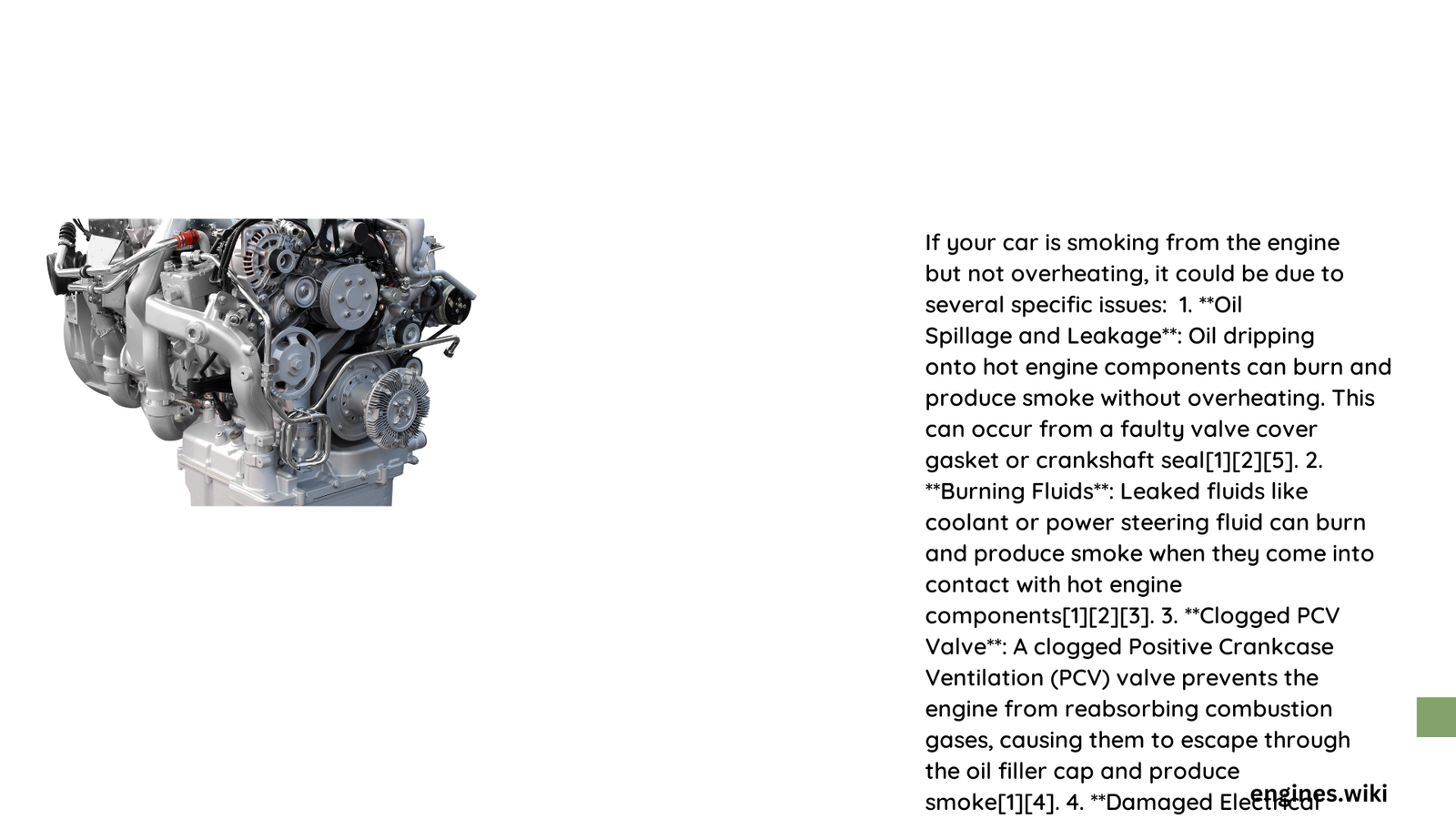When your vehicle emits smoke from the engine without showing signs of overheating, it signals potential underlying mechanical issues that demand immediate attention. This comprehensive guide explores the intricate world of engine smoke, decoding color variations, identifying root causes, and providing expert insights into diagnosing and resolving these complex automotive challenges.
What Causes Engine Smoke Without Overheating?
Why Does Blue Smoke Appear?
Blue smoke indicates oil burning within the engine’s combustion chamber. This phenomenon typically stems from several critical mechanical failures:
- Valve Seal Deterioration
- Allows oil to leak into combustion chambers
- Most common in older vehicles
-
Requires precise mechanical intervention
-
Piston Ring Wear
- Creates gaps allowing oil penetration
- Reduces engine compression efficiency
- Accelerates overall engine degradation
Diagnostic Strategies for Blue Smoke
| Symptom | Potential Cause | Recommended Action |
|---|---|---|
| Blue Smoke During Startup | Worn Valve Seals | Comprehensive Seal Replacement |
| Blue Smoke During Acceleration | Damaged Piston Rings | Compression Test Required |
What Triggers White Smoke?
White smoke presents a nuanced diagnostic challenge. Two primary scenarios exist:
- Condensation-Based White Smoke
- Thin, translucent vapor
- Typically disappears after engine warms
-
Normal operational characteristic
-
Coolant Leak Indicators
- Thick, persistent white smoke
- Sweet chemical odor
- Suggests potential internal cooling system failure
Why Does Black Smoke Emerge?
Black smoke represents fuel combustion irregularities, often indicating:
- Excessive fuel consumption
- Compromised air-to-fuel ratio
- Potential sensor malfunctions
Black Smoke Diagnostic Checklist
- [ ] Inspect air filter condition
- [ ] Evaluate fuel injector performance
- [ ] Check oxygen sensor functionality
- [ ] Examine mass airflow sensor
Critical Repair Considerations

How Expensive Are Potential Repairs?
Repair costs vary significantly based on specific issues:
- Blue Smoke Repairs
- Valve Seal Replacement: $500 – $1,500
-
Piston Ring Repair: $1,000 – $3,000
-
White Smoke Repairs
- Head Gasket Replacement: $1,000 – $2,500
- Cylinder Head Repair: $2,000 – $5,000
What Happens If Issues Remain Unaddressed?
Ignoring engine smoke can lead to:
– Accelerated engine wear
– Catastrophic mechanical failure
– Substantial financial repair expenses
– Reduced vehicle performance and efficiency
Preventative Maintenance Strategies
- Regular oil level monitoring
- Scheduled comprehensive engine inspections
- Immediate investigation of unusual smoke emissions
- Maintain consistent service records
Expert Recommendations
Professional mechanics unanimously suggest:
– Never ignore persistent engine smoke
– Conduct timely diagnostic assessments
– Use high-quality lubricants
– Follow manufacturer-recommended maintenance schedules
Conclusion
Understanding engine smoke requires technical knowledge and proactive approach. Each smoke color tells a unique mechanical story, demanding careful interpretation and precise intervention.
